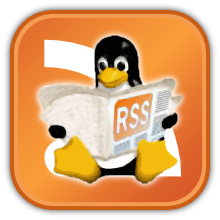The project was launched on 1 February 2011 by Google, in cooperation with 17 international museums, including the Tate Gallery, London; the Metropolitan Museum of Art, New York City; and the Uffizi, Florence.
Subject Matters
The subject of a work of art can offer an important clue to understanding its place in history. Check out these clues:
- Ancient Greeks and Romans used art to represent a wide variety of subjects. These included portraits of gods, rituals, heroes, rulers, and thinkers.
- Medieval subjects focused largely on the spiritual (representations of Christ, Mary, the saints, miracles, etc.).
- Renaissance subjects expanded beyond the religious to include classical and literary subjects, portraits, and the representation of the figure in a physical setting (landscape, interior, etc.).
- Baroque artists added pure landscape (in other words, a landscape that wasn’t a setting for another story), genre (scenes of everyday life), and still life.
- Modern art from the 19th century added new subjects including urban and suburban life.
Can you identify the subject matter and locate these images in their historical period?
Works of art.
- Baroque: Hans Bollongier, Still-Life with Flowers, 1639 (Rijksmuseum)
- Modern: Auguste Renoir, Dance at la Moulin de la Galette (Musée d’Orsay)
- Renaissance: Sandro Botticelli, La Primavera, 1481-82 (Uffizi Gallery)
- Medieval: Virgin and Child in Majesty, 1150-1200 (The Metropolitan Museum of Art)
- Ancient: Aphrodite (Venus of Taurida), Ancient Greece, 2nd century BC (The State Hermitage Museum)
- Saint’s shoes. Giovanni Bellini, St. Francis in the Desert, c. 1475-78 (The Frick Collection)
- Lover’s shoes. Jean-Honoré Fragonard, Progress of Love: The Meeting, 1771-3 (The Frick Collection)
- Christ’s shoes. Altobello Melone, The Road to Emmaus, c. 1516-17 (The National Gallery, London)
- Emperor’s shoes. Jacques Louis David, The Coronation of the Emperor and Empress, 2 December 1804, 1808-22 (Palace of Versailles)
- Aristocrat’s shoes. Jacques Louis David, The Coronation of the Emperor and Empress, 2 December 1804, 1808-22 (Palace of Versailles)
- Little girls shoes. James McNeil Whistler, Harmony in Green and Rose: The Music Room, 1860-61 (Freer Gallery of Art, Smithsonian)
- God of War’s shoes. Sandro Botticelli, La Primavera, 1481-82 (Uffizi Gallery)
- Venus’s shoes. Sandro Botticelli, La Primavera, 1481-2 (Uffizi Gallery)
- King’s shoes. Antoine-François Callet, Louis XVI, King of France and Navarre (1754-1793), wearing his grand royal costume in 1779, 1789 (Palace of Versailles)
- Peasant’s shoes. Max Liebermann, The Flax Barn at Laren, 1887 (Alte Nationalgalerie)
The roughly 1500 year span, between the fall of the Roman Empire (c. 300 C.E.) and the beginning of our Modern era (c. 1750), is broadly divided into the Medieval, Renaissance and Baroque periods. Each era found a unique way to shape human figures and the spaces they inhabit—an expression of the values of that particular period. Here are some simple ways to recognize these strategies.
If you liked this article, subscribe to the feed by clicking the image below to keep informed about new contents of the blog:









0 commenti:
Post a Comment